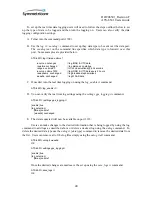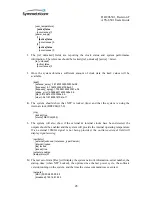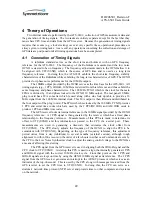
DOC06501_Revision
F
ATS-6501 Users Guide
51
track the signal received from GPS satellites. This process usually takes 5 to 10 minutes but may
take as long as 30 minutes depending upon how long the ATS-6501 has been powered off. After
four satellites are being tracked by the GPS receiver, the PPS output is adjusted so that it is
aligned with UTC(USNO). The green “TRACKING GPS” light on the front panel will also
illuminate to indicate to the user that the system is currently tracking the GPS signal.
To serve as a Stratum-1 network time protocol (NTP) server requires that the system’s
CPU clock be aligned with UTC(USNO). The process of locking the CPU clock to UTC(USNO)
requires setting the system time to UTC(USNO) and using the PPS received from the GPS
receiver to continuously steer the CPU clock. If the unit has been powered off for a long period
of time the CPU time may be multiple seconds off. In these cases, a coarse adjustment of system
time is performed and then the startup sequence is restarted. This process should only happen
once and only in cases where the system has been powered off.
The Time Code generator uses 10 MHz, 1 PPS, and system time to generate the
IRIG/NASA36 signals. As a result, it is the final step in the startup procedure. The Time Code
generator uses the 10MHz as its frequency reference and the PPS to indicate the start of the
second. These two signals serve as the time base for the Time Codes. System time is sent by the
CPU to the Time Code generator to indicate what time is associated with the received PPS signal.
This information is then used to produce the user/factory defined time codes.
















































